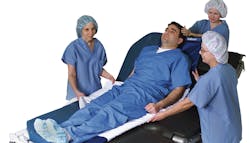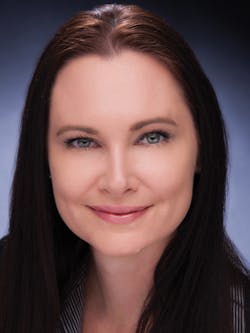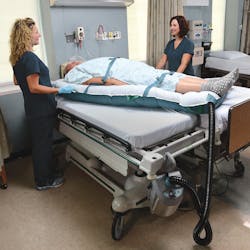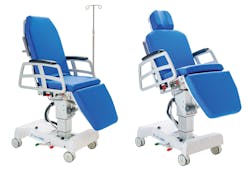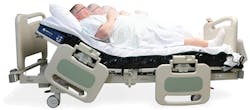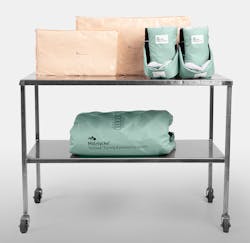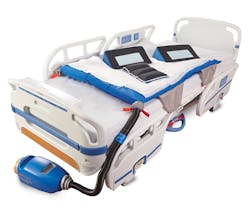Pressure injuries (PIs), also known as pressure ulcers or pressure wounds, continue to rise and harm patients throughout the U.S. PIs are difficult to detect, cause pain and infections, prolong hospital stays, are costly to treat and can become deadly.
The National Pressure Injury Advisory Panel (NPIAP) defines pressure injury as “localized damage to the skin and underlying soft tissue usually over a bony prominence or related to a medical or other device.” 1
The NIAP, renamed last November from the National Pressure Ulcer Advisory Panel (NPUAP) in line with the internationally preferred pressure injury term2, added, “The injury occurs as a result of intense and/or prolonged pressure or pressure in combination with shear. The tolerance of soft tissue for pressure and shear may also be affected by microclimate, nutrition, perfusion, co-morbidities and condition of the soft tissue.” 1
PI costs and causes
Healthcare staff, leadership and operations all play a part in PIs, said Erica Thibault, MS, RN, CNS, APN, CWON, Sizewise Clinical Manager, and Suzanne Worden, PT, MS, CSPHA, Sizewise Clinical Liaison. “Staffing ratios, lack of staff education, and lack of support from leadership all contribute to the growth of pressure injury incidence. There are also problems with assessment documentation, complete lack of written processes, or the failure of processes in place.”
Assessment and late-stage detection of PIs are other concerns, add Thibault and Worden. “PIs present differently in darker skin, and are often missed until they advance into higher, more dangerous stages. This is one of the most challenging areas in pressure injury (PI) prevention and treatment.”
Certain patients and their circumstances are more prone to PIs. For example, Warren points to older age and surgical procedures as factors. “As our population ages, the risks associated with developing a pressure injury increase. Additionally, surgical patients that may not have presented at-risk prior to surgery have an increased risk during and post operatively of developing a pressure injury.”
Mark Lazzeri, TransMotion Product Marketing Manager, on behalf of Winco Mfg, LLC, identifies patients’ health as another issue. “Patients are getting larger and staff is getting smaller. Obesity and diabetes are on the rise, increasing risk in a patient population in which pressure ulcer incidences are higher.”
Having cared for her own mom, Lauren Somma, President of Life Solutions, sees quality of care in the home as another concern. “Individual circumstances would be the first contributor, and secondly, the quality of the care a patient is receiving will play a role in pressure injuries. Caregiver fatigue and not having proper support will also contribute to the quality of care she/he is able to provide.”
Somma added, “The biggest challenge I see is that home caregivers and small companies are not sensitive to the challenges of positioning patients. This will lead to a lack of quality care, injuries, caregiver burnout and compromised patients. Think about the one simple fact that each person needing this level of care, if being cared for properly, needs to be changed two to three times per night. That’s huge! When this does not happen, bed sores, infections and UTIs are just some of the problems that can occur.”
Even more factors may be of influence, according to Mölnlycke Health Care. “The aetiology of pressure injuries is still being uncovered; for example, until recently it was not recognized that pressure injuries can occur in the OR in as little as two hours. As this knowledge base continues to grow, we can expect to see more effective prevention strategies become widespread across the continuum of care.”
Challenges and opportunities in care
Healthcare facilities face several challenges and opportunities when it comes to patient care, PI prevention and costs of workplace injuries, explain Thibault and Worden. “Cost is always a challenge, as many facilities are unable or unwilling to allocate funds for repositioning processes. In addition, obesity rates continue to rise and nursing staff levels continue to shrink. However, facilities are open to the chance to lower workers’ compensation claims and of course to improve patient satisfaction, so the opportunities rise just as much if not more than the challenges.”
Pete Nelson, Marketing Manager, Prevalon, on behalf of Stryker Medical Sage business unit, also calls staff injuries a challenge. “When healthcare workers lack proper tools for repositioning, the risk for injury increases. According to OSHA, the average cost of a patient handling claim is $15,800. 3 There’s also the factor of time away from work. When healthcare workers are unable to work or afraid of getting injured, it has a direct impact on patient care.”
Additionally, he raises finding the right patient positioning products as an opportunity. “Decreasing staff injuries due to patient handling and repositioning is an ongoing challenge for hospitals. There are several different types of repositioning products on the market, but many don’t work as intended because they don’t fit into the workflow of patient care or they aren’t readily available when needed. As a result, patients may be missing out on interventions to prevent pressure and skin injuries. This presents a huge opportunity to improve patient care.”
Patient positioning growth
According to “The Global Patient Positioning System Market” report by Data Bridge Market Research, the patient positioning product industry is revolutionizing and expanding. The market “accounted to USD 987.5 million in 2016 growing at a CAGR of 4.7% during the forecast period of 2017 to 2024.” 4
Further, the report found that, “The growth is due to a great extent of the developing needs of current medicinal services. The entire medical equipment market is facing and confronting different new challenges. The patient positioning market is specifically connected with the modernization drives, which are directly flooding the healthcare canvas. Few modest modernization drives have started great innovation, standards creation and streamlined the entire post and pre-surgery care for whole diagnostic industry, which is evolving faster around the world. It creates an advantage point for both patients and doctors.”
Looking ahead, the market is positioned for enhanced products and patient care, says Mölnlycke Health Care. “With increasing focus on the importance of pressure injury prevention and safe patient handling, the right patient positioning products will continue to gain awareness among clinicians and healthcare providers dedicated to improving standard of care. This increased focus will promote the elevation of the current standard of care like foam wedges, pillows or gels with limited clinical outcomes and will pave the way forward for advanced products.”
In-hospital solutions
From beds, chairs and pillows to boot protectors, positioners and turning systems, a wide scope of products is available to aid in safe patient positioning during medical procedures, hospital stays and other settings, and reduce the risk of PIs.
One area of focus for Innovative Medical Products (IMP) is surgical and post-op positioning, notes Jim Bailey, President, IMP. “One source of frustration for administrators in regard to pressure injuries is tissue injuries that can occur when the patient’s arm is tucked at his or her side with bedsheets. “Tucking” provides no real flexibility or pressure relief, creating unnecessary strain on the nerves and can lead to tissue injuries on the patient’s tucked arms. In addition to injuries and ischemia, tucking can also interfere with physiologic monitoring (i.e., blood pressure monitoring, arterial catheter monitoring, checking of electrical leads). Without clear access to the tucked arm, staff may be unable to examine a patient during an emergency. There is also an increased risk for the patient to develop compartment syndrome in the upper extremity.”
For surgeries, Bailey highlighted, “LapWrap, a positioning pad system ideal for any surgery that properly secures a patient’s arm to the OR table side rail while evenly distributing pressure across its soft foam lining. LapWrap also protects against shoulder injuries that could occur as a result of a patient’s arm falling off the side of an OR table. The soft material also protects neurological structures by preventing hyperextension at the elbow, while allowing anesthesiologists easy access for IV tubes and leads.
“We manufacture the most recognized knee positioner in the industry, the IMP De Mayo Knee Positioner. The device works by securely holding a patient’s leg so that OR staff doesn’t have to. The additional space grants surgeons unobstructed surgical access. An optional off-table version helps reduce lower back strain during procedures by allowing the surgeon to stand between the patient’s legs during surgery,” he continued.
For post-op recovery, Bailey added, “One product often recommended by surgeons for post-op care, a Hip Abduction Pillow, which helps to prevent the patient’s hip from moving out of the joint. The pillow is placed between the patient’s thighs and attached to their legs with straps. IMP’s post-op Hip Abduction Pillows provide greater comfort and more accessible nursing care by utilizing soft straps that help evenly distribute pressure.”
Stryker Medical Sage business unit supports in-bed patient positioning, says Nelson. “Boosting and repositioning patients in bed is a high-frequency task. The Sage Prevalon AirTAP Patient Repositioning System uses air-assisted technology to reduce the amount of exertion needed to turn patients. Unlike plastic slide sheets, it stays under the patient at all times, so it’s always ready to assist with turning, repositioning, and boosting the patient. AirTAP helps address sacral pressure injury risk factors by offloading the sacrum. It also helps maintain an optimal microclimate to protect skin.”
Air-assisted systems also are offered by HoverTech International, states Katie Kramer, Marketing Communication Manager. “The air technology used to reduce the physical effort for caregivers also benefits patients, who glide over surfaces on a cushion of air that eliminates friction and significantly reduces shear. Patients feel comfortable and secure, while families benefit from knowing their loved ones are not in pain during routine patient handling tasks.”
Kramer spotlights, “The HoverMatt Single-Patient Use (SPU) air transfer system uses air technology to reduce the force needed to move a patient by 80-90%. This reduces the physical strain on nurses, as well as the number of caregivers needed to perform patient handling tasks for improved staff safety and efficiency. The HoverMatt SPU is constructed of advanced breathable fabric that has been tested according to the latest standards approved by the National Pressure Injury Advisory Panel’s S3I Committee. This means caregivers can be confident leaving the HoverMatt SPU under their patients for all-day care, including lateral transfers, boosting, turning and positioning.
“The Q2Roller Lateral Turning Device is another tool that facilitates pressure injury prevention. Left under the patient for easy access, the Q2Roller can improve compliance to q2h protocol by eliminating manual handling for turning and positioning patients. Caregivers can quickly and easily inflate the chambers of the Q2Roller to gently turn the patient for pressure relief and improved access to the patient’s back and sacrum for hygiene and wound care,” she continued.
Winco Mfg, LLC concentrates on positioning and transporting patients, declares Lazzeri. “TransMotion by Winco offers TMM3; TMM4 and TMM5 stretcher chairs that are intended for use in patient treatment, transport and/or recovery within a hospital, clinic, same day/ambulatory surgery center, or similar environment. The TMM is a procedure chair, transport device and stretcher all in one! The powered position adjustments include table height, leg angulation, back angulation, Trendelenburg, ReverseTrendelenburg and Seat Tilt. These independent positions have been shown to reduce pressure points under the patient. 5 TransMotion Pad Cushions have a multi-layer foam that has also been shown to reduce pressure when compared to single layer devices.”
He points to Bascom Palmer Eye Institute’s use and improved safety, reporting, “Their goal was creating a no-lift, no-transfer environment in the OR, addressing three high-profile operational and safety issues: (1) patient fall hazards, (2) risk of injury to staff, and efficient patient flow. A zero-transfer solution was implemented utilizing the TransMotion TMM5 Surgical Eye Stretcher Chair. Patients remained in the same chair through all phases of their procedure, thus eliminating transfers that could be hazardous to patients and staff members. The goal was reached, as there were no patient falls and no worker’s compensation cases relating to back pain from transferring patients and increased patient flow.”6
Supporting patient positioning throughout care is Sizewise, express Thibault and Worden. “Our Hercules Patient Repositioner is best for patient positioning during hospital stays. Hercules helps a single caregiver reposition a patient up to 750 lbs. with the touch of a button.
“Hercules features a synthetic, moisture-wicking sheet, which sits on a low air loss mattress or pressure redistribution foam mattress. Clips help the sheet slide along with the patient, which reduces friction and shear. Hercules sheets can be removed and washed in the washer, and then tumble-dried. The mattress can be cleaned and disinfected according to a facility’s regular mattress cleaning procedure. We’ve recently started offering disposable sheets for facilities not wanting to manage laundry. Only one caregiver is needed to reposition, which saves patient dignity by reducing the number of people in the room. Hercules lowers pressure injury (PI) rates, allows for boosting often and painlessly, and helps reduce caregiver injury (and therefore lost workdays). Our customers absolutely love it. They say it’s easy to use and a time saver, and that back injuries have virtually disappeared,” they added.
At-home solutions
ChuckMates helps caregivers accomplish the task of positioning and changing their loved ones at home, shared Somma. “This product (ChuckMates) was developed solely for the assistance with my own mom. It is weight bearing so it helps the caregiver and the patient with positioning, maneuvering, and bed changing. It can be used with one or two caregivers, and the handles are ergonomically placed. The goal is to help prevent caregiver fatigue and back strain as well as allow the patient to maintain dignity while being cared for in this way. The material is strong, breathable and Microban protected. ChuckMates can be washed as often as needed with bleach or detergent and air dried.”
She adds about her 2019 National Caregiving Product Innovation Award winning product, “Caregivers say that their backs are not hurting, they are not as fatigued, and they love the varied use for the product. They use it to pull the patient to the top of the bed, rotate the patient for bed changing, and it also helps patients get out of bed by pulling it and helping the patient rotate to bring their legs to the side of the bed. Patients are not being pushed and pulled and compromised in any way. It’s a win/win for all.”
Multi-setting solutions
Assisting patient positioning across a range of healthcare and residential settings is Mölnlycke Health Care. Their Z-Flo Fluidized Positioners, Tortoise Turning and Positioning System and Z-Flex heel boots are designed for single-patient use. However, these pressure injury prevention tools can accompany a patient across the continuum of care – from OR to ICU to hospital to long-term care to home, according to the company.
Mölnlycke’s Z-Flo Fluidized Positioners are used to redistribute pressure over a greater surface area or to help offload bony prominences. They are easy to mold and will conform to virtually any shape, allowing them to adapt to multiple anatomical sites, including occiput, sacrum and extremities. Their unique structure also allows areas in the positioner to be depressed, or hollowed out, for medical lines, tubes or existing wounds. At North Shore University Hospital, Brennan et al reported that there were no moisture concerns with the use of the Z-Flo Fluidized Positioner, and that patients were more comfortable and less likely to move, potentially reducing the effects of friction and shearing. The hospital experienced a 54% overall reduction in pressure injuries. 7
Mölnlycke Tortoise Turning and Positioning System is a support surface that has been clinically shown to help prevent pressure injuries by providing continuous pressure redistribution.8 The Tortoise positioning mat helps redistribute pressure over the patient’s sacrum and buttocks with a low pressure air chamber designed to envelop the patient through positive air displacement. If the Tortoise travels home with the patient, it makes it easier for family caregivers to boost and move the patient while adding a layer of pressure-relieving comfort to any bed. At Sharp Coronado, the use of the Tortoise system reduced caregiver injuries by 89% and resulted in a direct cost savings of $108,948 on claims in just one year.9
The Z-Flex Fluidized Heel Boot Protector was designed by Mölnlycke to offload the heel and maintain an anatomically neutral foot position. The boot incorporates a Z-Flo Fluidized Positioner to mold and contour around the vulnerable Achilles tendon. A built-in foot gate allows heel skin assessment without boot removal. During a recent study at Ethica Health, 100% of the study patients reported comfort and ability to comply with the plan of care versus those with the prior heel suspension boot, which was reported as hot, heavy and uncomfortable. Staff compliance with protocol also improved due to ease of application and resident satisfaction.10
Industry future
As the patient positioning market and needs continue to grow, Lazzeri predicts, “Enhanced pressure reduction surfaces and additional design improvements to enhance patient and caregiver satisfaction.”
Encompass Group, LLC is focusing on surfaces, reports Warren. “In addition to a full line of support surfaces that are made in the U.S., Encompass Group LLC recently launched the innovative, engineer and clinician designed Airisana. Airisana features the first of its kind, five support surfaces in one. This surface offers low air loss with targeted air flow, pressure redistribution, alternating pressure on a randomized cycle to prevent acclimation, microclimate management, immersion and envelopment, and lateral rotation to assist with caregiver turn assist, pulmonary health and early mobility.”
Lifts and education are in development with Stryker Medical Sage business unit, says Nelson. “The new Sage AirTAP Lift Compatible (LC) was introduced to the market in November. AirTAP LC provides 3-in-1 patient mobility by helping staff achieve compliance to protocol for in bed repositioning, lateral transfer, and vertical transfer from bed to chair using overhead and portable lift equipment. We also partner with hospitals to provide the education and tools necessary to ensure proper use and drive better patient care.”
While IMP looks to increased Ambulatory Surgical Centers (ACSs) and a hip positioning device. “One positive healthcare trend is the rise of ASCs. Recently, ASCs have been approved to do more types of joint replacement surgeries. IMP is committed to helping ASCs enhance profitability by offering many space-conscious solutions, attractive product bundling options and access to on-site in-service training for ASC staff. In 2020, we’re planning a release of an all-new hip positioning system that will significantly reduce setup times in the OR. The product requires very little training to set up and features a unified, unfolding design that simplifies setup and saves time.”
References
1. NPUAP Pressure Injury Stages. https://cdn.ymaws.com/npuap.site-ym.com/resource/resmgr/npuap_pressure_injury_stages.pdf
2. National Pressure Ulcer Advisory Panel (NPUAP) changes name to National Pressure Injury Advisory Panel NPIAP. https://npiap.com/news/477287/NPUAP-Name-Change-Announcement-.htm
3. AON Risk Solutions. Health Care Workers Compensation Barometer. December 2014.
4. The Global Patient Positioning System Market. https://www.databridgemarketresearch.com/reports/global-patient-positioning-system-market
5. Data on file at TransMotion by Winco
6. Healthcare Purchasing News, “Transportation equation”, June 2019
7. Brennan, M. and Laconti, D. Using Conformational Positioning to Reduce Hospital-Acquired Pressure Ulcers. Journal of Nursing Quality, 2013.
8. Trevellini, AC, Connecting the Dots: Pressure Ulcer Prevention and Safe Patient Handling, Poster NPUAP 2015.
9. Kass, Jan, Economic Impact of a Safe Patient Handling and Mobility (SPHM) system on Staff and Safety in a Long Term Subacute Care Unit, Poster Spring SAWC 2017.
10. Recke C., Davis T., Clemmons T. Keeping It Heeled – Heel Pressure Ulcer Prevention and Treatment in Long Term Care. SAWC 2019 Conference. Poster.
About the Author
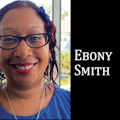
Ebony Smith
Ebony Smith was previously Managing Editor for Healthcare Purchasing News.
